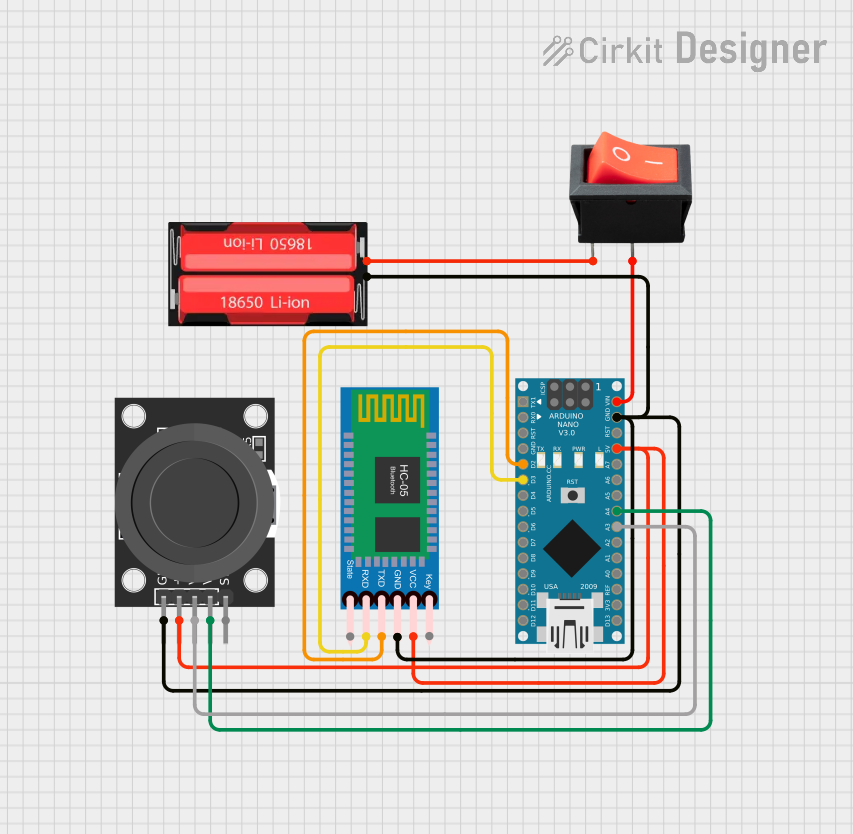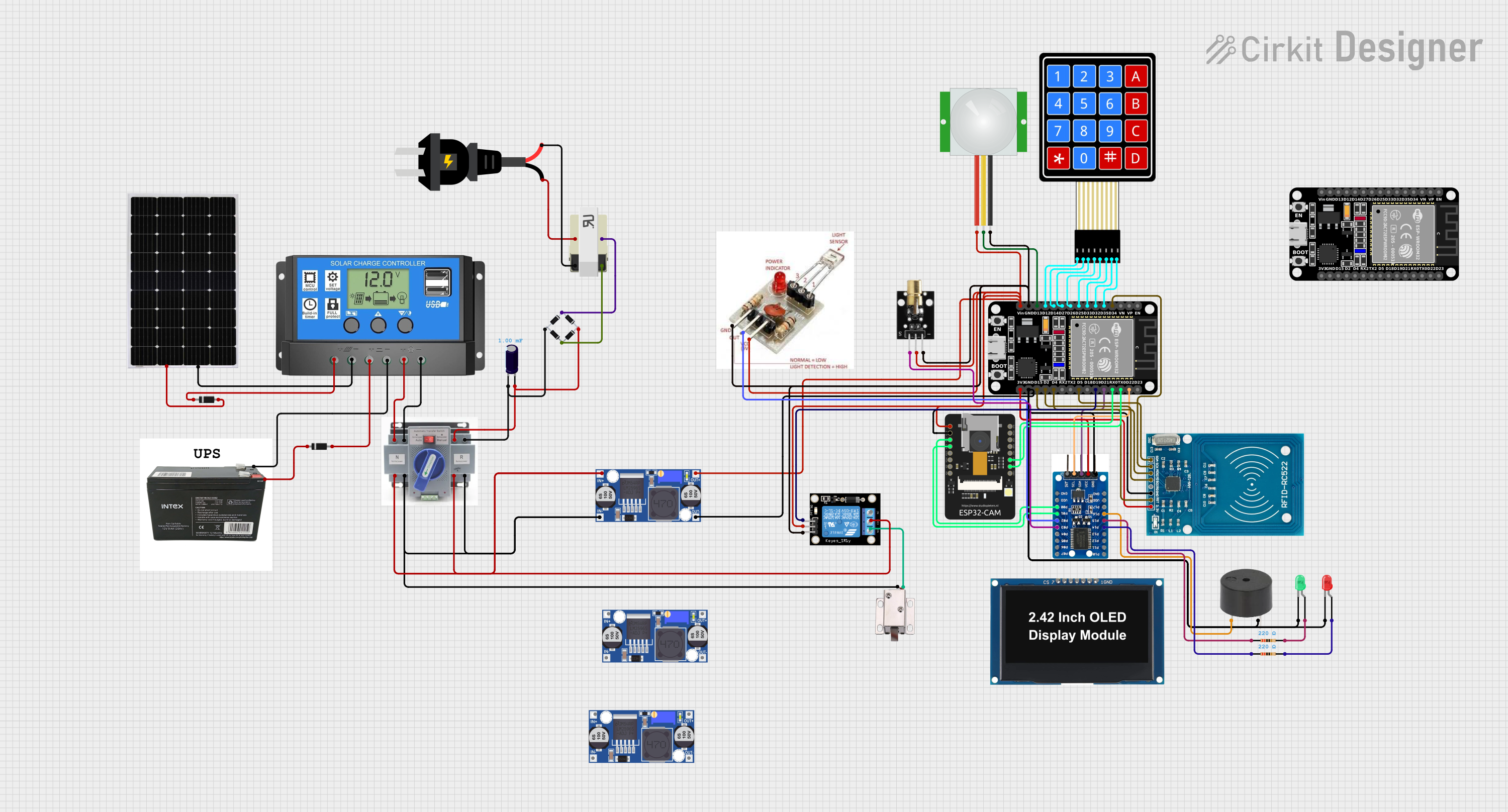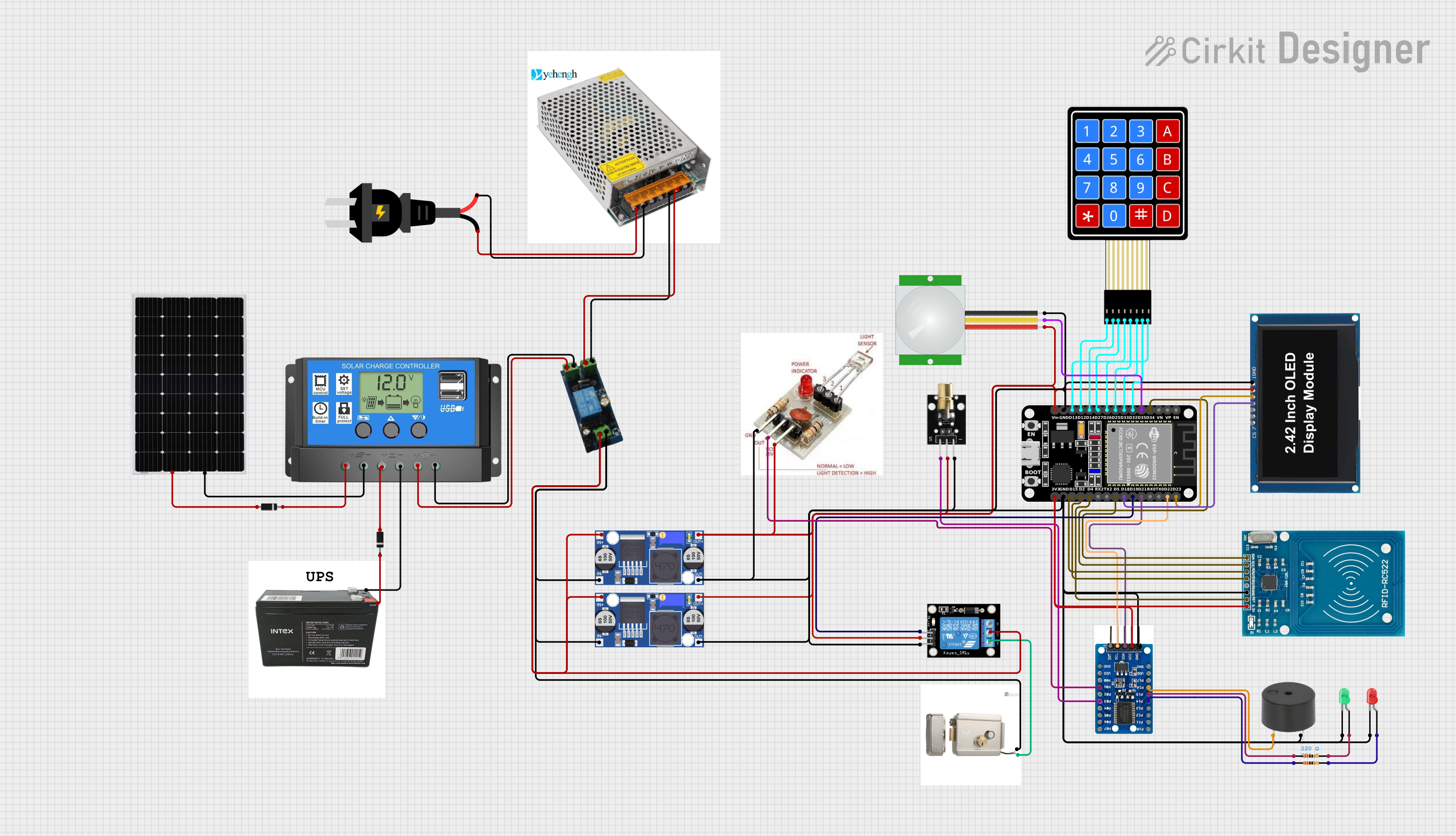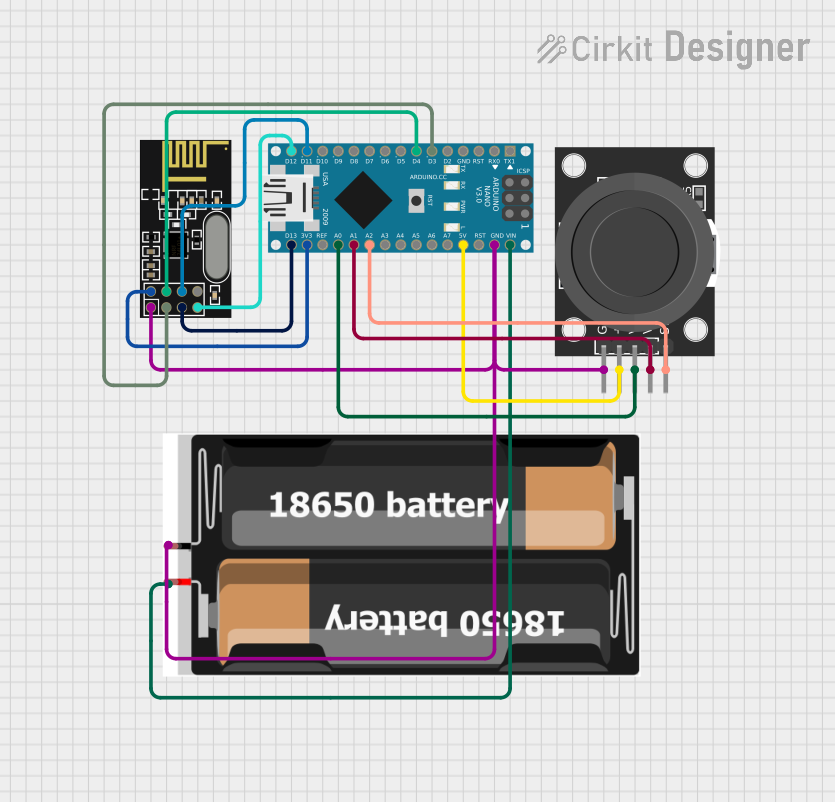
How to Use KY-036: Examples, Pinouts, and Specs

 Design with KY-036 in Cirkit Designer
Design with KY-036 in Cirkit DesignerIntroduction
The KY-036 is a capacitive soil moisture sensor designed to measure the moisture content in soil. Unlike resistive soil moisture sensors, the KY-036 uses capacitive sensing, which reduces corrosion and increases the sensor's lifespan. It outputs an analog signal that corresponds to the soil's moisture level, making it ideal for applications requiring precise and reliable moisture detection.
Explore Projects Built with KY-036

 Open Project in Cirkit Designer
Open Project in Cirkit Designer
 Open Project in Cirkit Designer
Open Project in Cirkit Designer
 Open Project in Cirkit Designer
Open Project in Cirkit Designer
 Open Project in Cirkit Designer
Open Project in Cirkit DesignerExplore Projects Built with KY-036

 Open Project in Cirkit Designer
Open Project in Cirkit Designer
 Open Project in Cirkit Designer
Open Project in Cirkit Designer
 Open Project in Cirkit Designer
Open Project in Cirkit Designer
 Open Project in Cirkit Designer
Open Project in Cirkit DesignerCommon Applications and Use Cases
- Automated irrigation systems
- Smart gardening and plant care
- Agricultural monitoring
- Environmental sensing and research
- DIY electronics and IoT projects
Technical Specifications
- Manufacturer: ESP32
- Manufacturer Part ID: 22
- Operating Voltage: 3.3V to 5V
- Output Type: Analog voltage signal
- Current Consumption: < 20mA
- Moisture Detection Range: 0% (dry) to 100% (wet)
- Dimensions: 98mm x 23mm x 3mm
- Interface: 3-pin header (VCC, GND, AOUT)
Pin Configuration and Descriptions
| Pin Name | Pin Type | Description |
|---|---|---|
| VCC | Power Input | Connect to 3.3V or 5V power supply. |
| GND | Ground | Connect to the ground of the circuit. |
| AOUT | Analog Output | Outputs an analog voltage proportional |
| to the soil moisture level. |
Usage Instructions
How to Use the KY-036 in a Circuit
- Power the Sensor: Connect the VCC pin to a 3.3V or 5V power source and the GND pin to the ground of your circuit.
- Read the Output: Connect the AOUT pin to an analog input pin of a microcontroller (e.g., Arduino UNO or ESP32). The voltage on AOUT will vary based on the soil's moisture level.
- Insert the Sensor: Place the sensor's probe into the soil. Ensure the sensor is inserted vertically and fully into the soil for accurate readings.
Important Considerations and Best Practices
- Avoid Water Contact with Electronics: Only the probe should be in contact with the soil. Ensure the electronic components remain dry.
- Calibration: For accurate results, calibrate the sensor by measuring the output voltage in dry and fully saturated soil.
- Power Supply: Use a stable power source to avoid fluctuations in the output signal.
- Signal Filtering: Add a capacitor (e.g., 0.1µF) between the AOUT and GND pins to reduce noise in the analog signal.
Example Code for Arduino UNO
// KY-036 Soil Moisture Sensor Example Code
// Reads the analog output of the KY-036 and prints the moisture level to the Serial Monitor.
const int sensorPin = A0; // Connect AOUT pin of KY-036 to A0 on Arduino
int sensorValue = 0; // Variable to store the sensor reading
void setup() {
Serial.begin(9600); // Initialize serial communication at 9600 baud
pinMode(sensorPin, INPUT); // Set the sensor pin as input
}
void loop() {
sensorValue = analogRead(sensorPin); // Read the analog value from the sensor
float moistureLevel = map(sensorValue, 0, 1023, 0, 100);
// Map the sensor value to a percentage (0% to 100%)
Serial.print("Soil Moisture Level: ");
Serial.print(moistureLevel);
Serial.println("%");
delay(1000); // Wait for 1 second before taking the next reading
}
Troubleshooting and FAQs
Common Issues and Solutions
No Output or Incorrect Readings
- Cause: Loose or incorrect wiring.
- Solution: Double-check the connections to ensure VCC, GND, and AOUT are properly connected.
Fluctuating or Noisy Readings
- Cause: Electrical noise or unstable power supply.
- Solution: Add a decoupling capacitor (e.g., 0.1µF) between AOUT and GND to stabilize the signal.
Sensor Not Responding in Wet Soil
- Cause: Sensor probe is damaged or corroded.
- Solution: Inspect the probe for physical damage and replace if necessary.
Output Voltage Does Not Change
- Cause: Soil is too dry or sensor is not fully inserted.
- Solution: Ensure the sensor is properly inserted into the soil and test with moist soil.
FAQs
Q: Can the KY-036 be used outdoors?
A: Yes, but ensure the electronic components are protected from water and weather conditions.Q: How do I calibrate the sensor?
A: Measure the output voltage in completely dry soil and fully saturated soil. Use these values to map the sensor's output to a percentage scale.Q: Can I use the KY-036 with a 3.3V microcontroller like ESP32?
A: Yes, the KY-036 is compatible with both 3.3V and 5V systems.Q: How deep should I insert the sensor into the soil?
A: Insert the sensor fully into the soil for accurate readings, ensuring the probe is in contact with the soil at all points.